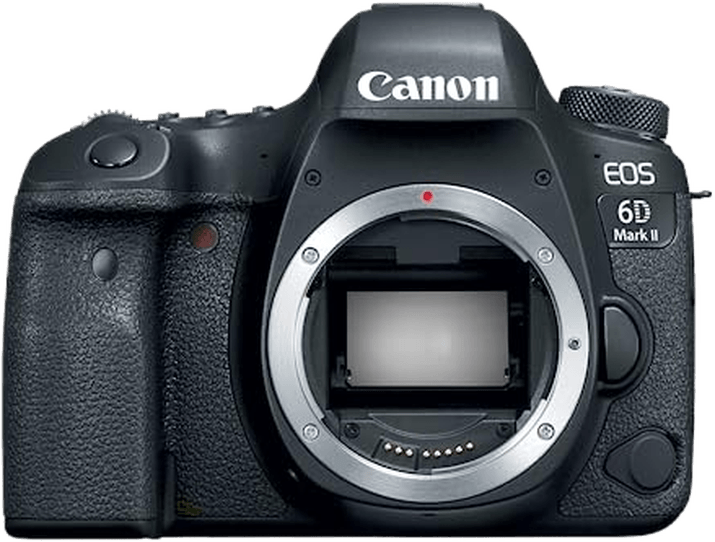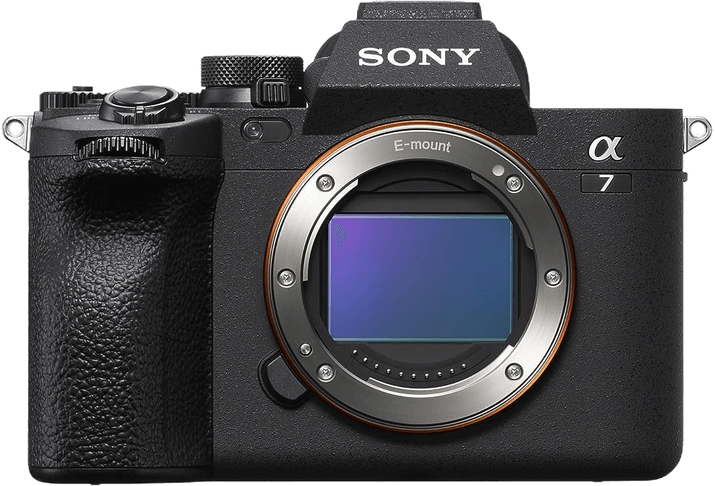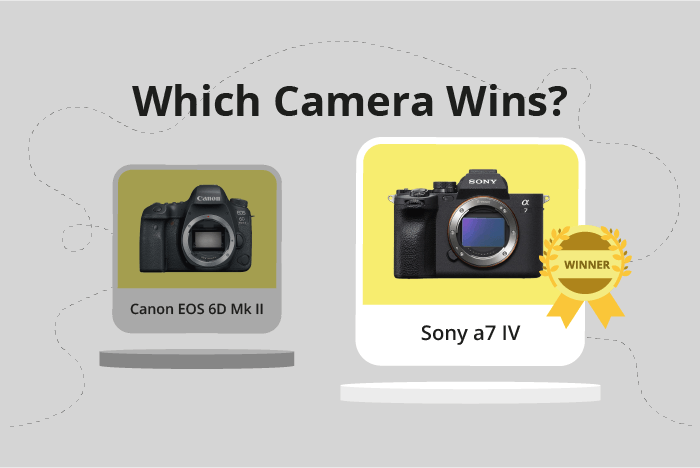Canon EOS 6D Mark II vs Sony a7 IV Comparison
Canon EOS 6D Mark II

Sony a7 IV

The Sony a7 IV outperforms the Canon EOS 6D Mark II with a score of 84/100 compared to 71/100. Both cameras share similarities, such as being released in 2017 and 2021, having launch prices of $2000 and $2499, and dimensions of 144 x 111 x 75mm and 131 x 96 x 80mm, respectively.
The Sony a7 IV excels due to its mirrorless camera type, resulting in a smaller and lighter body at 659g compared to the 6D Mark II’s DSLR type and weight of 453g. However, the Canon EOS 6D Mark II may still appeal to some users due to its lower price point.
Considering the difference in scores and specifications, the Sony a7 IV is the superior choice for those seeking a high-performing, compact camera, while the Canon EOS 6D Mark II offers a more affordable option for users who prioritize cost.
Canon EOS 6D Mark II vs Sony a7 IV Overview and Optics
The Sony a7 IV outperforms the Canon EOS 6D Mark II in optics with a score of 85/100 compared to the Canon’s 69/100. Both cameras share some common specifications, including a CMOS sensor, full-frame sensor size, and respective lens mounts for their brands – Canon EF for the 6D Mark II and Sony FE for the a7 IV.
The Sony a7 IV surpasses the Canon EOS 6D Mark II in several aspects. It has a higher megapixel count of 33, allowing for more detailed and sharper images. The a7 IV also boasts a faster shooting speed of 10 frames per second, making it more suitable for capturing fast action. Its DXOMARK sensor score of 97 further highlights the superior image quality potential. Additionally, the Sony a7 IV features image stabilization, which helps reduce the effects of camera shake and allows for sharper images in low light or at slower shutter speeds.
On the other hand, the Canon EOS 6D Mark II has a lower megapixel count of 26.2 and a slower shooting speed of 6.5 frames per second. Its DXOMARK sensor score is 85, indicating lesser image quality potential compared to the Sony a7 IV. The Canon 6D Mark II also lacks image stabilization, making it more challenging to capture sharp images in certain conditions without using a tripod or other stabilizing equipment.
Based on these comparisons, the Sony a7 IV emerges as the superior camera in terms of optics. Its higher megapixel count, faster shooting speed, better sensor score, and image stabilization make it a more versatile and capable choice for photographers seeking the best image quality. The Canon EOS 6D Mark II, while still a competent camera, falls short in these areas and may not be the ideal choice for those prioritizing optical performance.
Canon EOS 6D Mark II vs Sony a7 IV Video Performance
The Sony a7 IV outperforms the Canon EOS 6D Mark II in video capabilities, scoring 91/100 compared to the Canon’s 57/100. Both cameras share some common features, such as built-in time-lapse functionality. However, the Sony a7 IV has superior video specifications, making it the clear winner in this comparison.
The Sony a7 IV boasts a 4K maximum video resolution, with dimensions of 3840 x 2160, which is significantly higher than the Canon EOS 6D Mark II’s Full HD resolution of 1920 x 1080. This difference in resolution allows the Sony a7 IV to capture more detail and produce higher quality video footage than the Canon EOS 6D Mark II.
Additionally, the Sony a7 IV has a maximum video frame rate of 120fps, while the Canon EOS 6D Mark II only reaches 30fps. This higher frame rate enables the Sony a7 IV to capture smoother, more professional-looking video, especially in fast-paced scenes or when shooting slow-motion footage.
The Canon EOS 6D Mark II does not have any clear advantages over the Sony a7 IV in terms of video capabilities. Its lower resolution and frame rate limit its potential for professional video work or capturing high-quality footage.
Considering these differences, the Sony a7 IV stands out as the superior camera for video capabilities. Its higher resolution and frame rate offer better video quality and more versatility in various shooting situations. In contrast, the Canon EOS 6D Mark II’s limitations make it a less suitable choice for those prioritizing video performance.
Canon EOS 6D Mark II vs Sony a7 IV Features and Benefits
The Canon EOS 6D Mark II and the Sony a7 IV both have a feature score of 83 out of 100, indicating that these cameras possess similar capabilities. They share common specifications, including a 3-inch screen size, 1,040,000-dot screen resolution, touchscreen functionality, flip screen capability, Wi-Fi, and Bluetooth connectivity.
The Canon EOS 6D Mark II outperforms the Sony a7 IV in one specific area: GPS functionality. This feature allows users to geotag their photos, providing additional information about the location where the images were captured. This can be particularly useful for travel and landscape photographers who want to document their journeys and easily organize their images.
On the other hand, the Sony a7 IV does not offer any distinct advantages over the Canon EOS 6D Mark II in terms of features. Both cameras have the same feature score and share almost all specifications, making them evenly matched in this aspect.
Given their equal feature scores and shared specifications, both cameras are suitable for various photography needs. The Canon EOS 6D Mark II’s GPS functionality sets it apart, making it a better choice for photographers who value geotagging capabilities. However, for those who do not require GPS, the Sony a7 IV is an equally viable option. Ultimately, the choice between these cameras will depend on individual preferences and specific photography requirements.
Canon EOS 6D Mark II vs Sony a7 IV Storage and Battery
The Sony a7 IV outperforms the Canon EOS 6D Mark II in storage and battery with a score of 76/100 compared to Canon’s 45/100. Both cameras accept SD cards, but the Sony a7 IV also supports CFexpress Type A cards and UHS-II compatibility, providing faster data transfer rates. Additionally, the Sony a7 IV features two memory card slots, while the Canon EOS 6D Mark II only has one.
The Canon EOS 6D Mark II has a longer battery life, providing 1200 shots compared to Sony’s 580 shots. However, the Sony a7 IV compensates for its shorter battery life with USB charging capabilities, allowing for convenient charging on-the-go. The Canon EOS 6D Mark II lacks this feature.
Despite the Canon EOS 6D Mark II’s longer battery life, the Sony a7 IV’s superior storage capabilities and USB charging option make it the better choice for photographers requiring flexibility and high-performance storage options.
Canon EOS 6D Mark II vs Sony a7 IV – Our Verdict
Are you still undecided about which camera is right for you? Have a look at these popular comparisons that feature the Canon EOS 6D Mark II or the Sony a7 IV:

